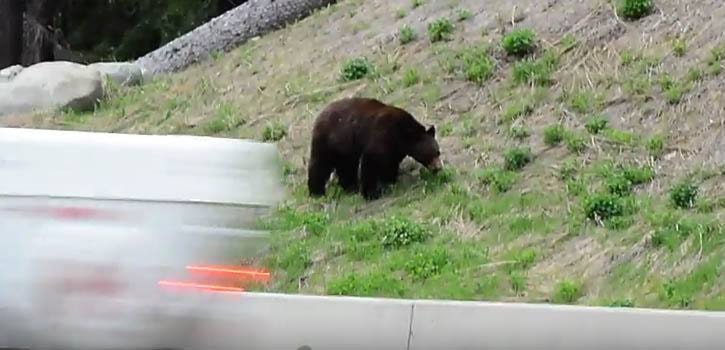Bears are emerging from hibernation around B.C. as another strong tourist season begins, causing collections of often unwary onlookers and creating danger.
Hungry black bears come to roadsides in early spring to eat new grass, and can quickly attract a crowd.
"They cause what's known as bear jams, where people stop to photograph the bears, look at the bears or feed the bears," said Chris Doyle, deputy chief of provincial operations for the B.C. Conservation Officer Service.
"The problem with that is that it causes the bears to be habituated to people. It also does cause bears to get hit by vehicles on the highways, because if they are getting fed, they're going to be attracted to those cars and they may dart out onto the highway quickly."
Conservation Officers have fielded 300 calls about bear conflicts since April 1. Doyle said the problem is mainly in southwestern B.C. now and will pick up farther north in coming weeks.
A perennial hotspot for bear conflicts is along the North Shore and up the lower Fraser River, extending from North Vancouver to Maple Ridge where housing development abuts with mountain terrain.
Doyle said proper garbage management and use of bear-proof containers will help minimize contact.
With camping season starting, Doyle stressed the need to keep garbage secure.
"Those can be dangerous situations when you have a bear wandering around a campground."
Here's a typical tourist video, from someone police hope is parked in a safe spot:



